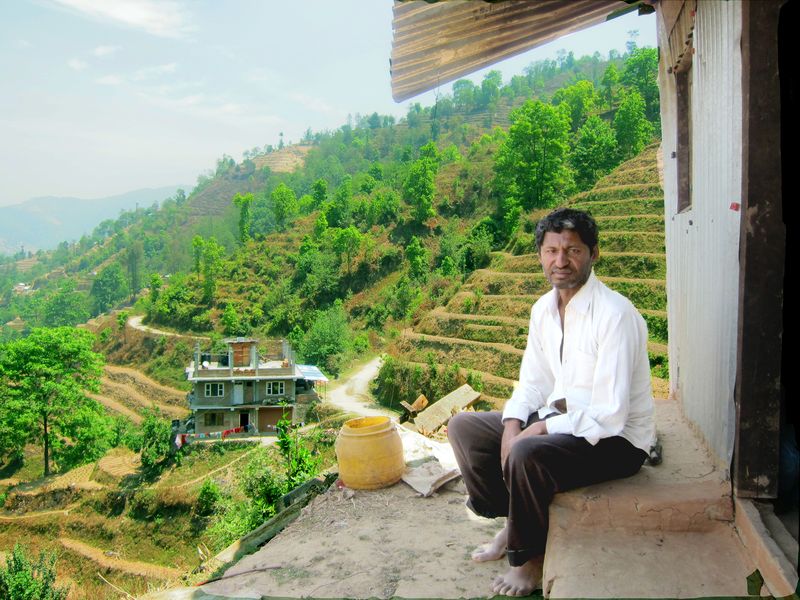Small clusters of temporary shelters made of zinc sheets dot the hills of Bhaktapur district. In the hot and sunny April, the glare of the metal strikes you from a long distance. Over half a million houses, mostly in Nepal’s rural areas, were completely destroyed or heavily damaged last year. Navaraj Bishwakarma’s and Kanchhi Tamang’s houses were among those.
“Life was never easy for us. But in all my 56 years, I had never seen so much pain and agony as I have seen in the past one year. Everything that we called home was razed to the ground,” says Kanchhi, who lives in Nagarkot village.
Sitting with her grandson in the arms, she looks over an empty patch of land where her house once existed. Just a few wooden door frames and planks are left of it, neatly lumped together on the side.

With her grandson in the arms, Kanchhi Tamang looks over an empty patch of land where her house once existed. ©ICRC, Tanvi
The two daughters-in-law of the Tamang household were in the middle of their pregnancy when their lives were shattered. “This baby in my arms, Arman, will never know what our own house looked like. In my life, I will never be able to gather enough resources to rebuild what we had. But I do hope to give him a house,” adds Kanchhi.
Ironically, as Kanchhi explained, it was a funeral in the neighbourhood that saved their lives – as nearly everyone was outside attending the procession when the ground shook. After the initial days spent by the roadside, support poured in from all quarters and the shelters were constructed. “We received cash grants from the Red Cross in two installments of 10,000 and 5,000 rupees. The government also provided 15,000 rupees. That is how we managed to survive the worst phase,” she further adds.
The Red Cross provided emergency shelter to more than 130,000 families, along with 95,000 grants to buy food and essential items such as warm clothes and blankets apart from tools and seeds.
For Navaraj’s family in Telkot village, it has been a similar story of fear and hope. When we met him, his wife was out toiling the farms just like the Saturday afternoon last year when the earthquake occurred. Navaraj recalls, “I was alone in our two-storey house. Due to my disability, I could not even rush out when it started collapsing.” Worried about his wife’s safety, he was unsure whether he would survive to meet his family again.
“I managed to live and I consider myself lucky. The neighbours helped me construct this shelter. We have the skills to grow food, to raise poultry. We are hardworking and we don’t need much financial help to take care of our daily needs. But we do need a safe and secure place to live with dignity,” he affirms.
The monsoon season and the cold winter has been particularly harsh for those living in the temporary shelters. With this year’s summer, too, looking unusually severe, rebuilding their houses remains a big humanitarian concern.



